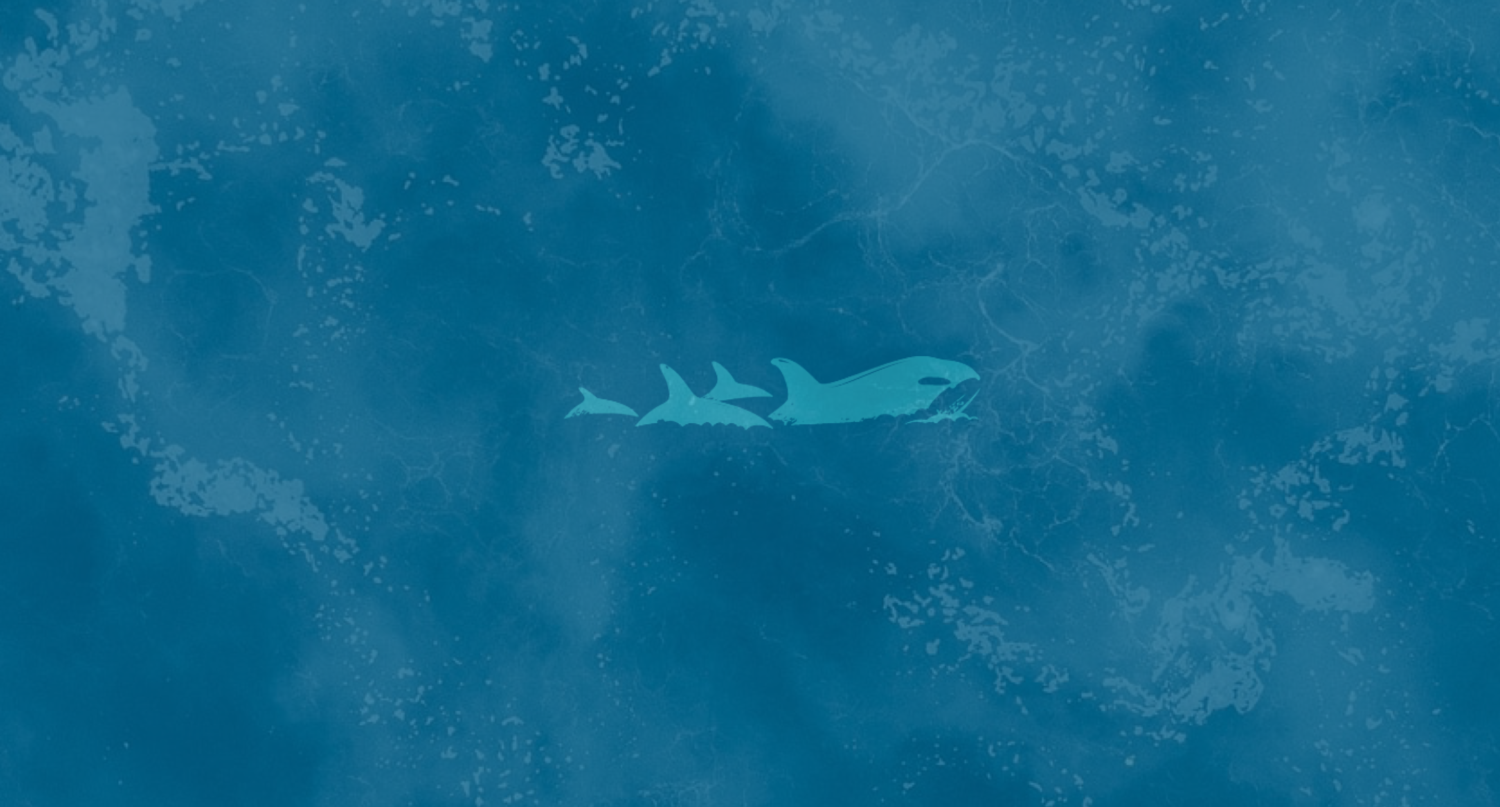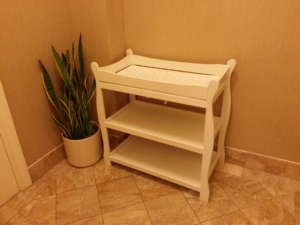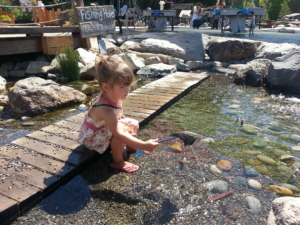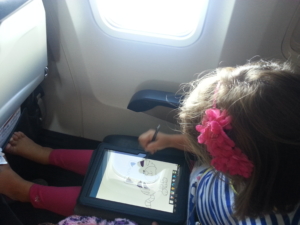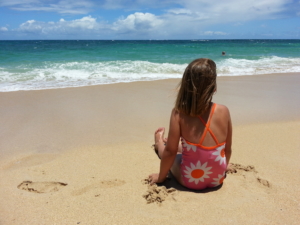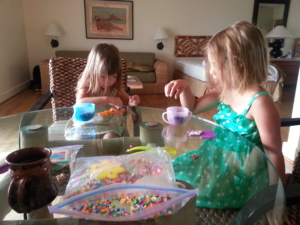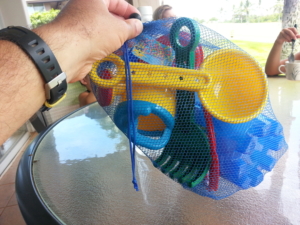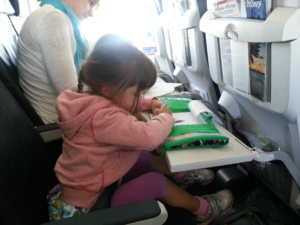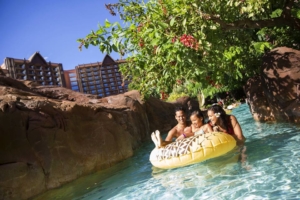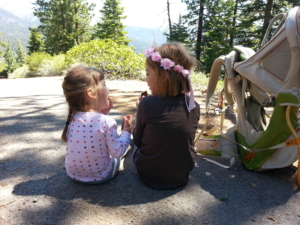Pro-potty parity for family travel
You don’t have to be political to support equal access to baby changing stations in public facilities. The reality is that we dads often lack changing tables in men’s rooms, and when we’re away from home (or traveling) with a diaper-wearing child, the oversight can be a real pain in the ass (pun intended).
Adding insult to injury, of course, is this: Moms usually have changing tables in women’s rooms.
I’ve grumbled about this for years, even making a point of photographing changing tables in men’s rooms when I see them, just to document small wins (see accompanying photo; thank you, The Ritz-Carlton, Half Moon Bay). Now other people (men and women alike) are doing something about it, in the form of a bill in the California State Legislature known as SB1350, or the “Potty Parity for Parents Act.”
The effort, which has been gaining national attention all summer long, aims to ensure that public facilities for changing babies’ diapers are equally available to both men and women in California.
Specifically the Act would require a baby changing station to be installed in the men’s restroom if one is being installed in the women’s restroom, or requires a diaper changing station to be included in a family restroom that is available to both men and women.
The bill, which targets places such as museums and other publicly funded spots, is being sponsored by Sen. Ricardo Lara (D-Huntington Park/Long Beach).
Personally, I’m proud to proclaim I’m pro-potty parity. Though our girls have grown out of diapers, passage of the bill truly would make a difference in the lives of millions of family travelers each year. When I consider the impact something like this could have on a national level, I see an entire nation of happy baby-bottoms. Also, we dads never would have to change our babies’ diapers in the trunks of our SUVs again.
Apparently there’s a public rally in support of this movement on Friday. I won’t be able to attend (it’s in Long Beach, down near L.A.), but rest assured: I’m on board. And if you’re a dad and you travel with diaper-aged kids, you should be too.
Where do you end up changing your child’s diapers when there are no changing tables to be found?

